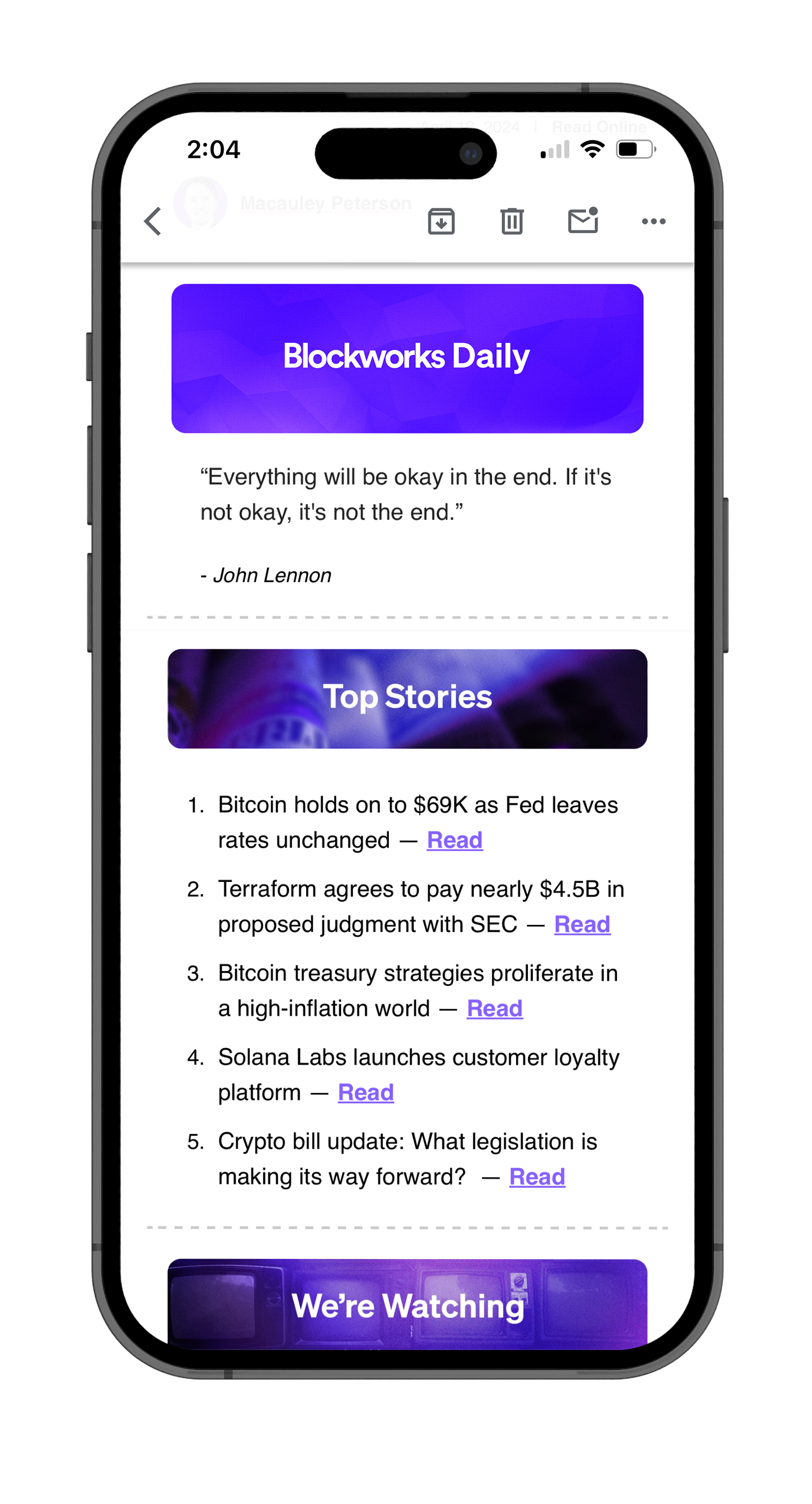Weekdays
Blockworks Daily
The newsletter that helps thousands of investors understand crypto and the markets, by Byron Gilliam.

Weekdays
Blockworks Daily
The newsletter that helps thousands of investors understand crypto and the markets, by Byron Gilliam.
